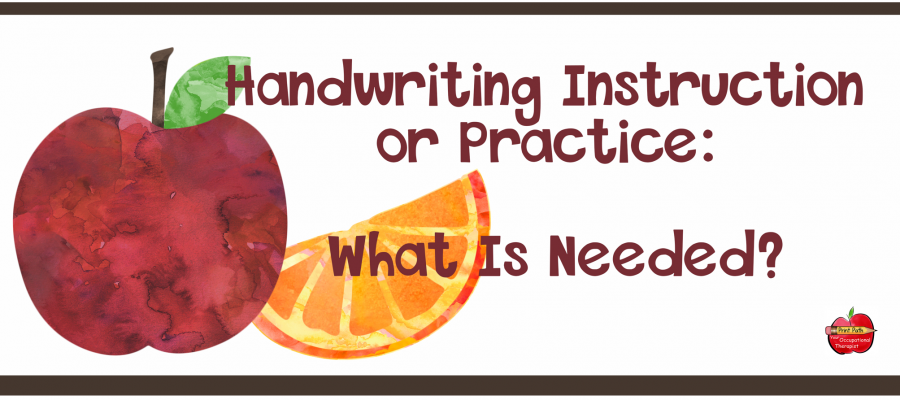Do your students have the pre-writing, visual-motor, fine motor and executive functioning skills that they need?


Do your students have the pre-writing, visual-motor, fine motor and executive functioning skills that they need?

Functional handwriting is a key to both learning and expressing one’s self. Automatic handwriting skills open doors for children, allowing them to take in, process, and recall new information, and to express themselves through written language. If you are a parent, teacher, or therapist and you tend to think of ‘handwriting instruction’ and ‘handwriting practice’ as one in the same, check out this post!

Use an enticing game to add power to shoulders, arms, and hands by adding a simple twist to this classic children’s activity.

As an occupational therapist, I get many referrals for children who have difficulty with handwriting speed & legibility. Teachers and parents often assume that the reason for a child having problems is that they have fine-motor difficulties or delays.

After you have identified and started to address the root issue interfering with pencil grasp, see Part 1 & 2, you can apply a variety of strategies to specifically facilitate and teach pencil grasp.

Hand strength and endurance is one-factor limiting sustained writing. As an occupational therapist, I am always looking for ways to improve kid’s hand strength! Since punching holes is so motivating for kids, I use punch cards as an engaging way to combine phonics and motor skills into a fun task for independent or partner work. Punching is so fun children will choose to do it during free choice or privilege time!

The four main factors that interfere with pencil grasp development and what parents and teachers can do to address those factors.

Understanding and Supporting Pencil Grasp Development: 3 – 6 years First off, this first installment of a 3-part blog post will explore What grasps look like in the major three categories. Why some grasps are more advantageous than others. What ages typically-developing children are using these three types of grasp.

Video Instructions

Read Spotlight